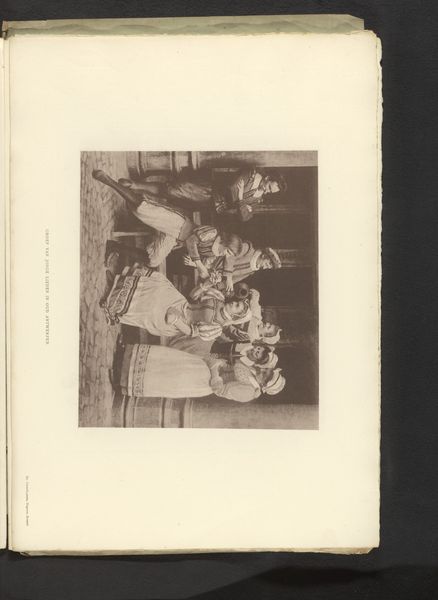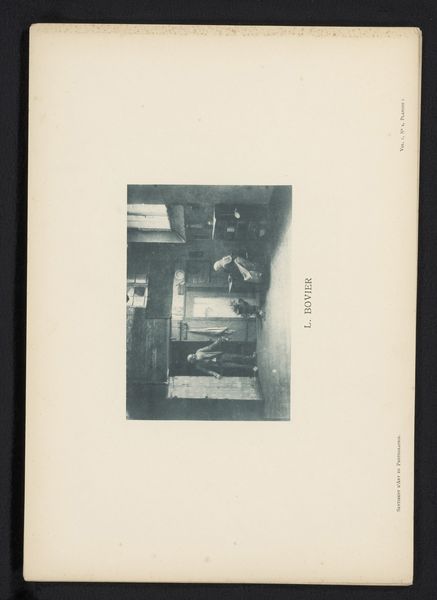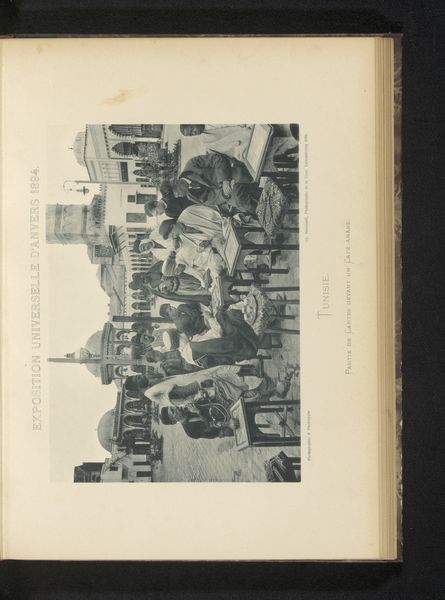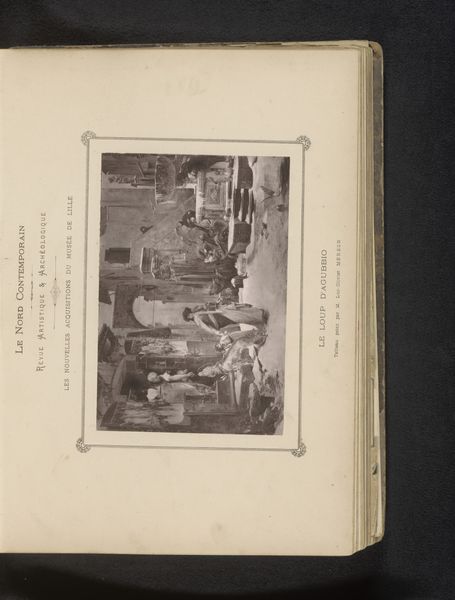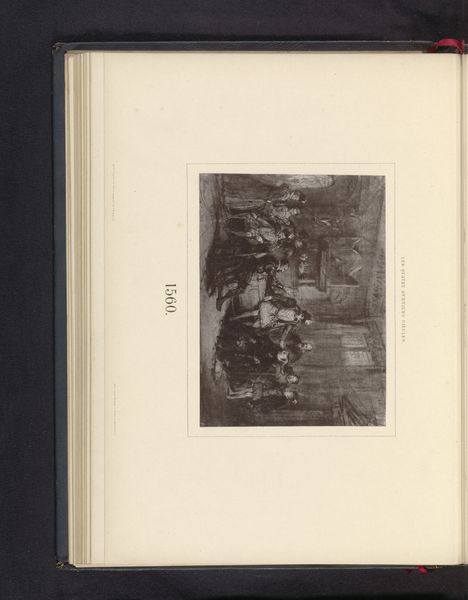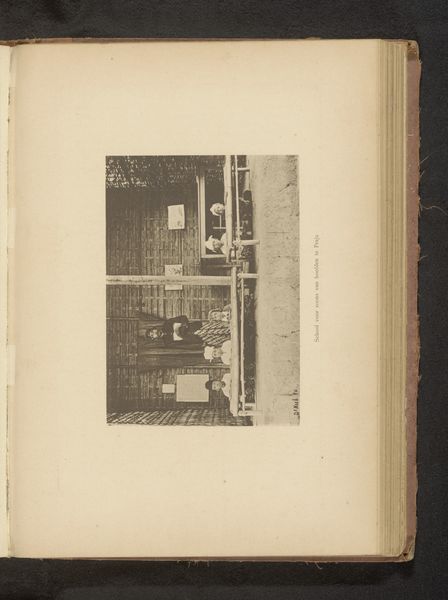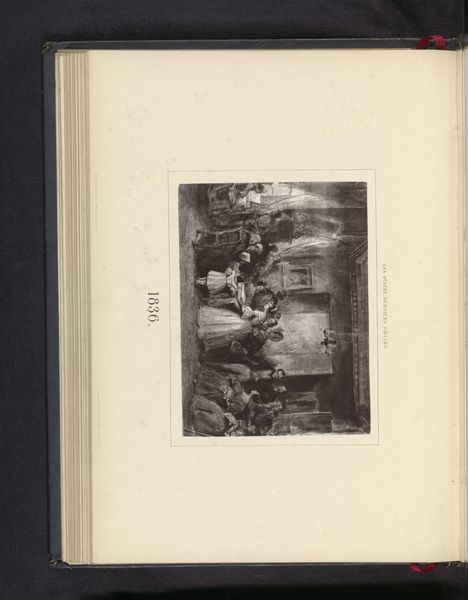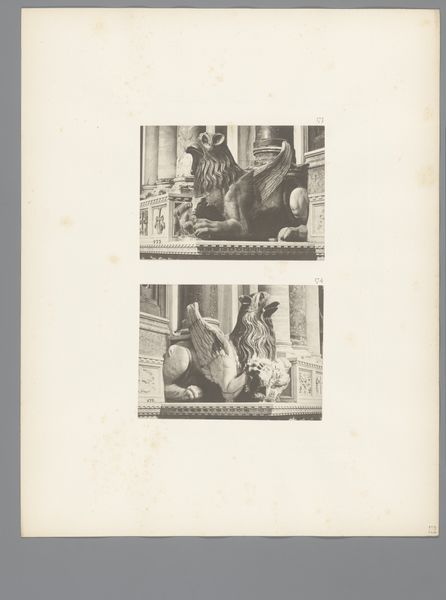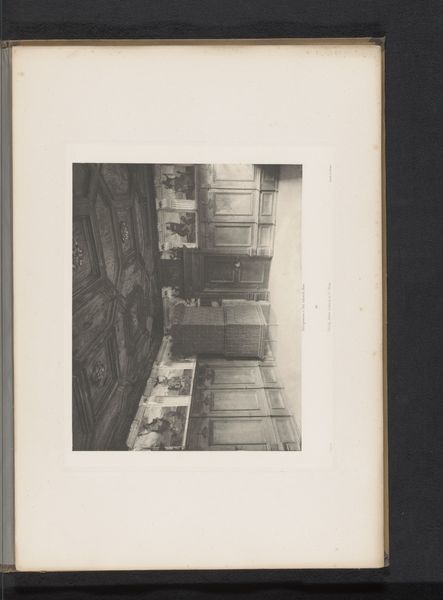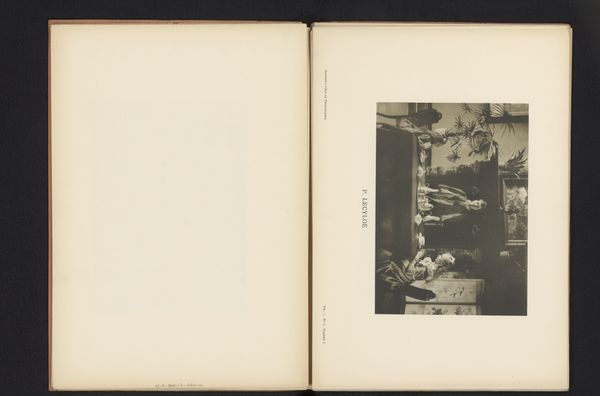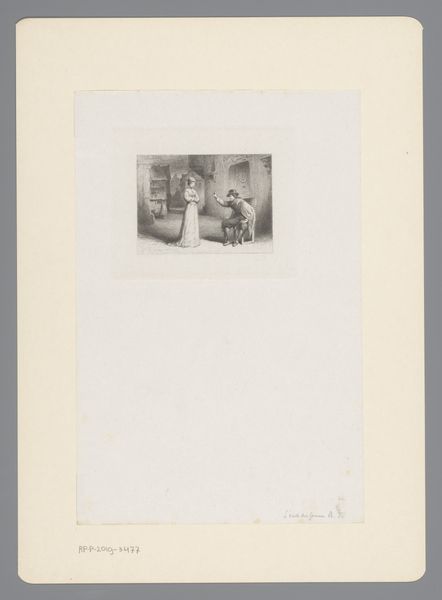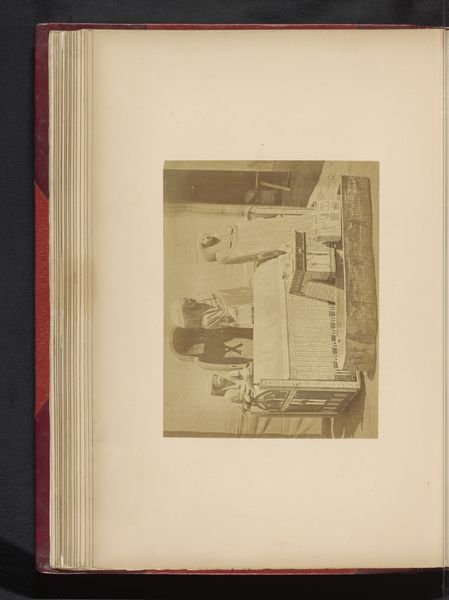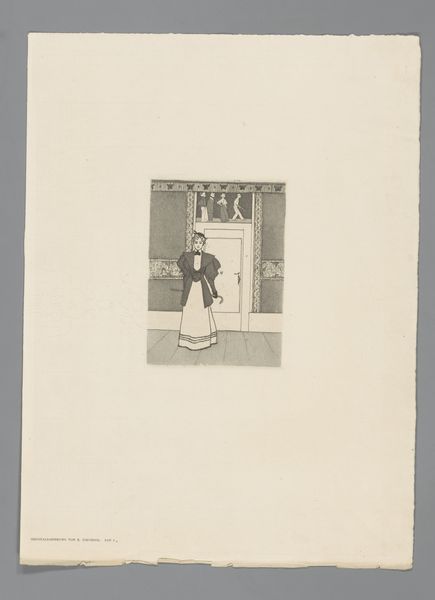
Reproductie van een tekening van varkens voor een slachthuis in Oud-Antwerpen op de Wereldtentoonstelling van 1894 in Antwerpen, door Frans van Kuyck Possibly 1894 - 1895
0:00
0:00
drawing, print, paper, ink, engraving
#
drawing
# print
#
paper
#
ink
#
cityscape
#
genre-painting
#
engraving
Dimensions: height 207 mm, width 249 mm
Copyright: Rijks Museum: Open Domain
Curator: The starkness of the print immediately evokes a sense of discomfort, a grim reminder of where our sustenance often comes from. Editor: Absolutely. Let's contextualize this disquieting piece. This is a reproduction of a drawing by Frans van Kuyck, likely from 1894 or 1895. The title is quite descriptive: "Reproduction of a drawing of pigs for a slaughterhouse in Old Antwerp at the World's Fair of 1894 in Antwerp." It's crafted with ink, presumably an engraving, on paper. Curator: Knowing it was displayed at the World's Fair is… surprising. What statement was being made by showcasing such a visceral depiction of animal processing? Was it meant as a form of transparency, a look into the everyday reality of food production for a rapidly industrializing world? Editor: I think that's precisely the question Van Kuyck's work raises. These large expositions were carefully constructed representations of modernity. Often they promoted an idea of progress, and this artwork subverts such a clean narrative by showcasing this gritty aspect of urban life and questioning who this 'progress' benefits. This slaughterhouse operates as a fascinating glimpse into late 19th-century social and industrial practices, and it encourages discourse about labour, and also class, because those in windows are observing labourers on street. Curator: The composition heightens that unease. The confined space, the pigs resigned to their fate...it’s all very… matter-of-fact. The building looms large, practically imprisoning the animals and the workers, mirroring their entrapment in the economic structures of the era. How did this kind of portrayal fit within broader artistic movements of the time? Editor: We see a clear link to social realism. Artists were increasingly concerned with portraying the lives of working-class people, their struggles, and the social injustices they faced. And this drawing also shows interesting tensions between idealization and grimness: an historical rendering that includes images of the day's industrial mechanisms and their unfortunate fallouts. This image likely made powerful and immediate appeals to the social consciousnesses of visitors. Curator: Seeing it through that lens clarifies its power. It moves beyond a simple depiction and serves as a quiet protest against the exploitative practices that fueled industrial growth. Thanks, as always, for bringing such valuable insights into the cultural importance of imagery. Editor: Thank you. Recognizing how this art contributes to social awareness allows it to resonate far beyond its creation, pushing us to question the status quo today, and how such industrial injustices echo through time.
Comments
No comments
Be the first to comment and join the conversation on the ultimate creative platform.
